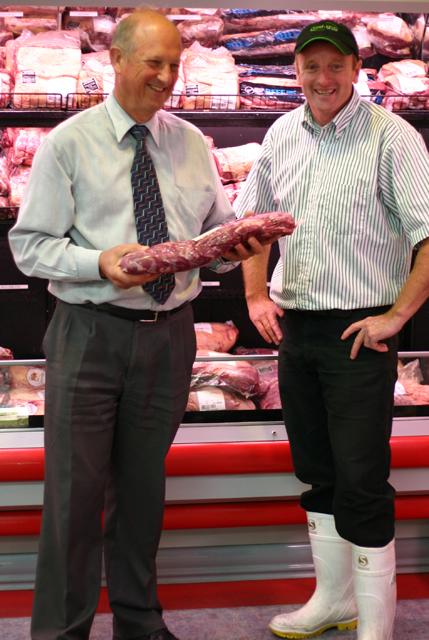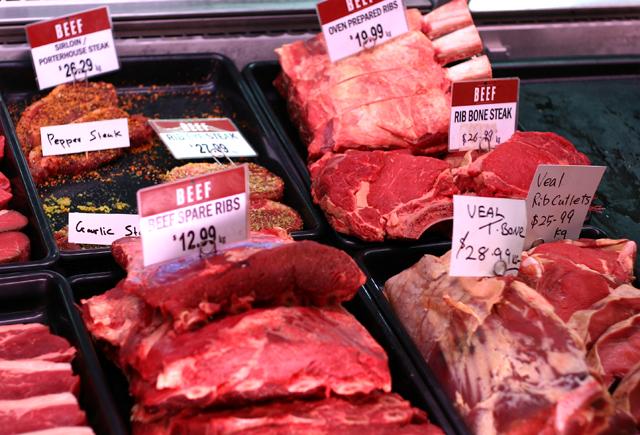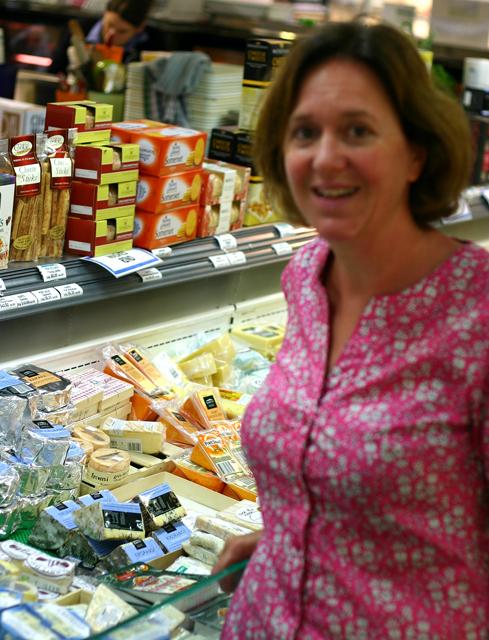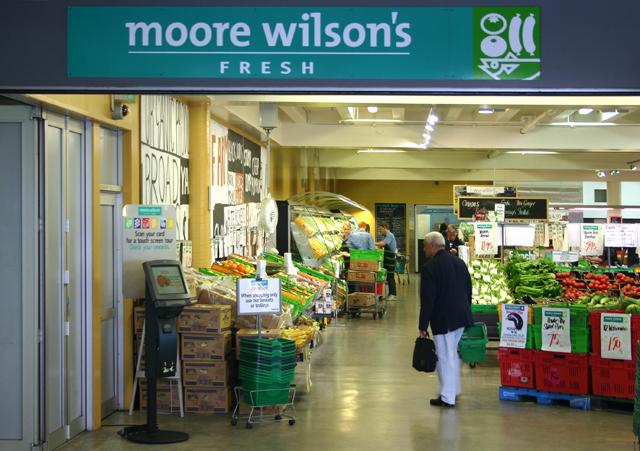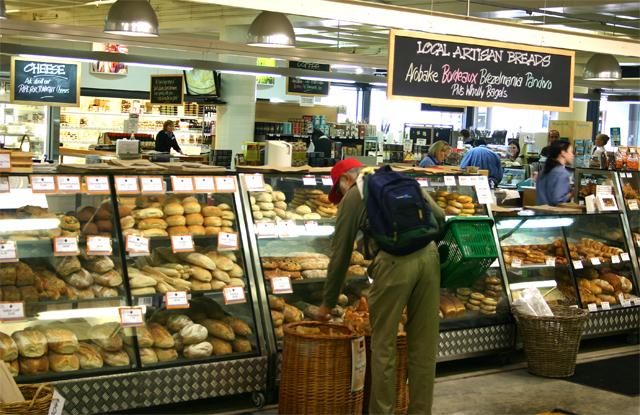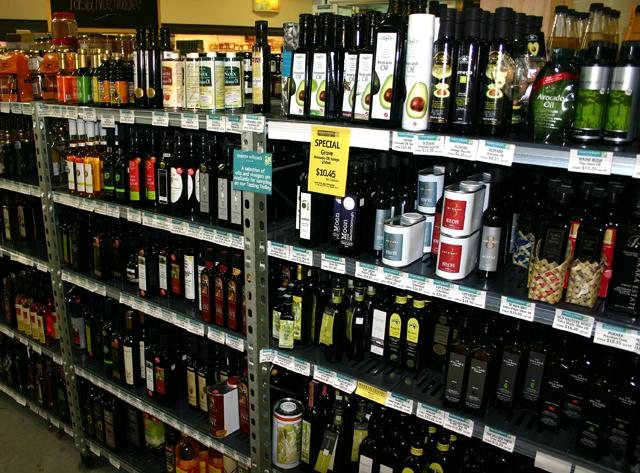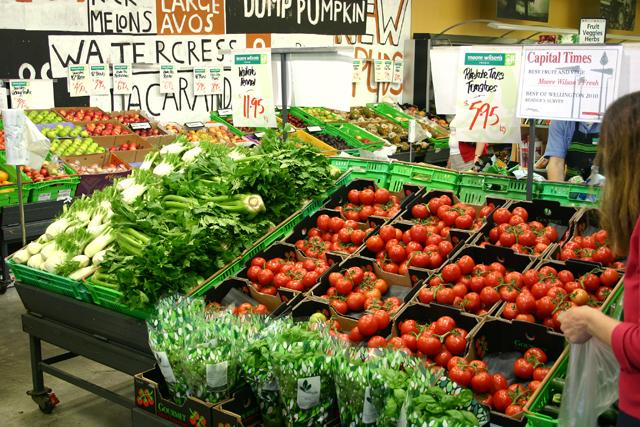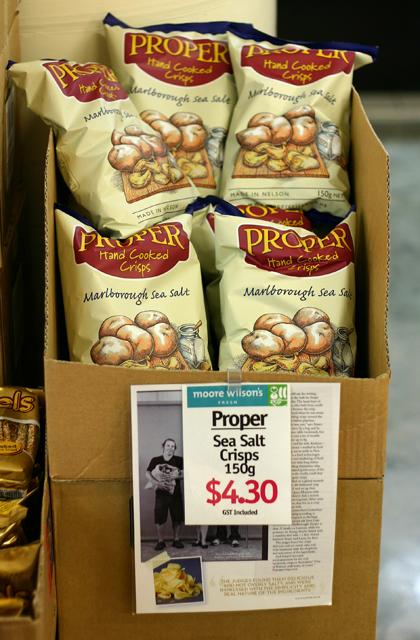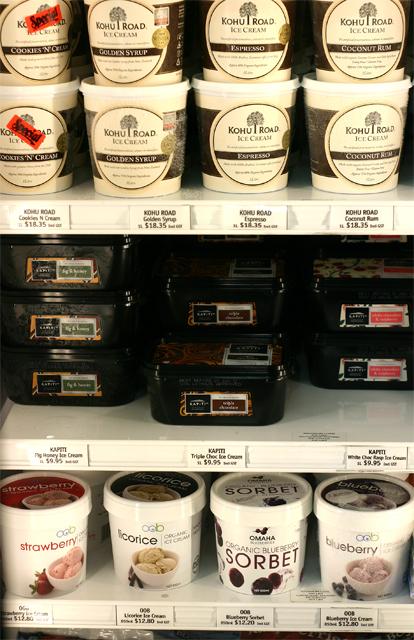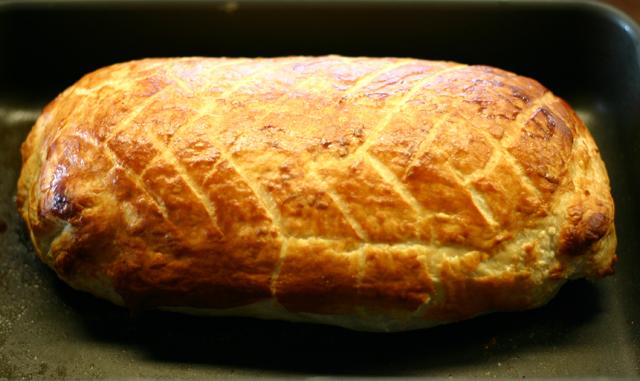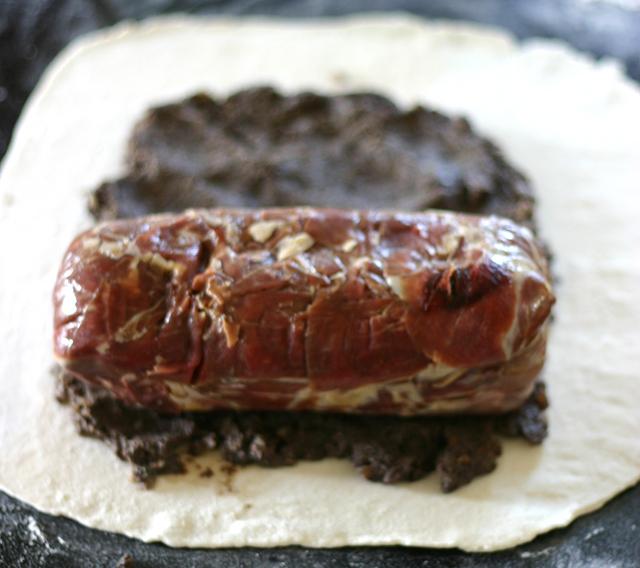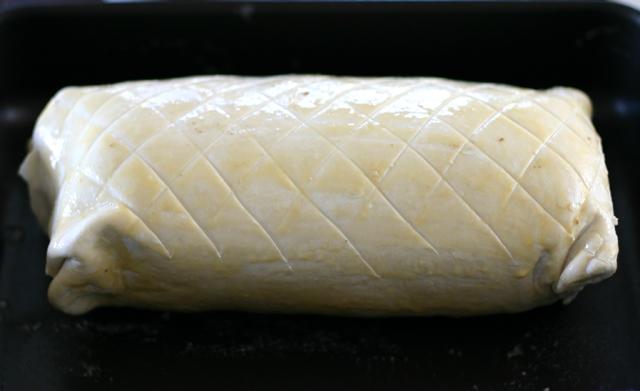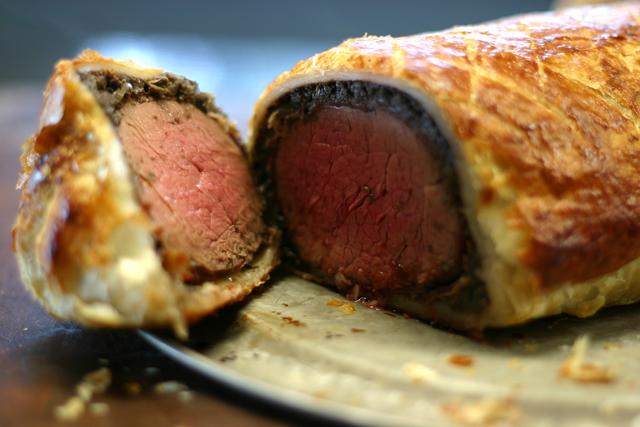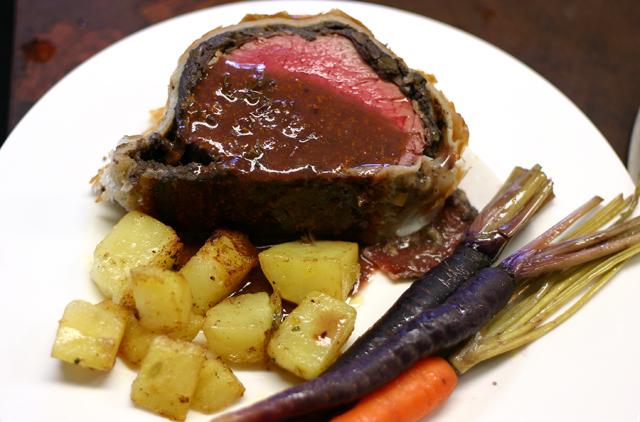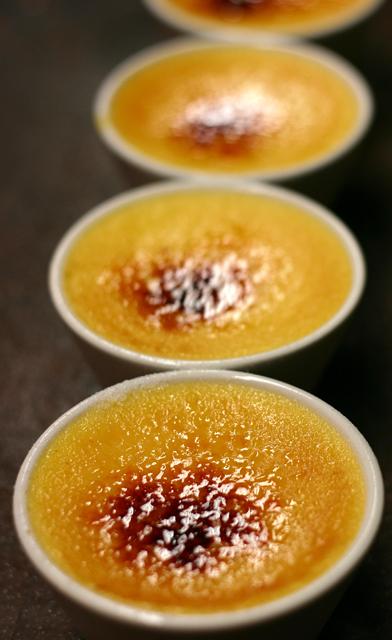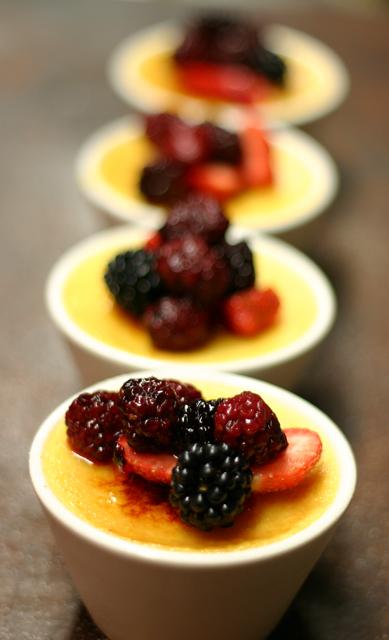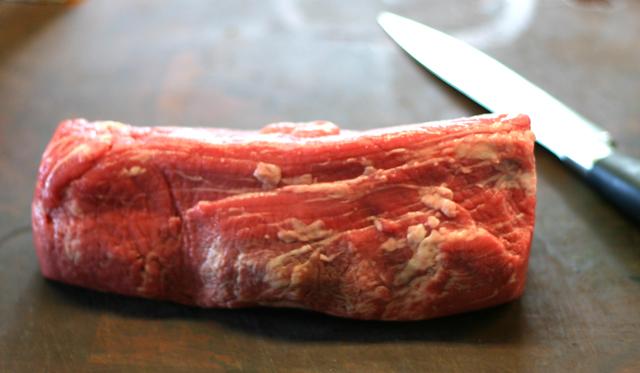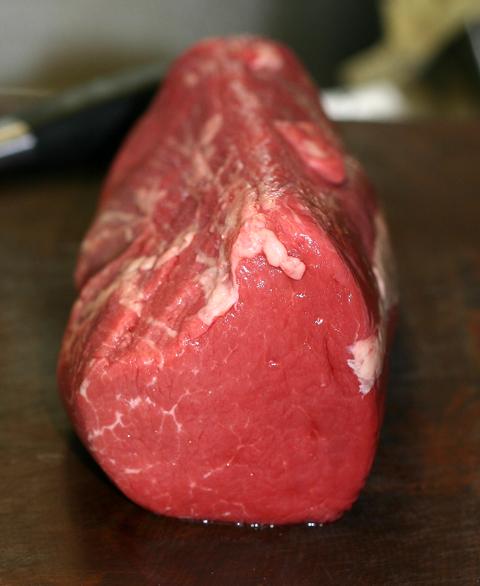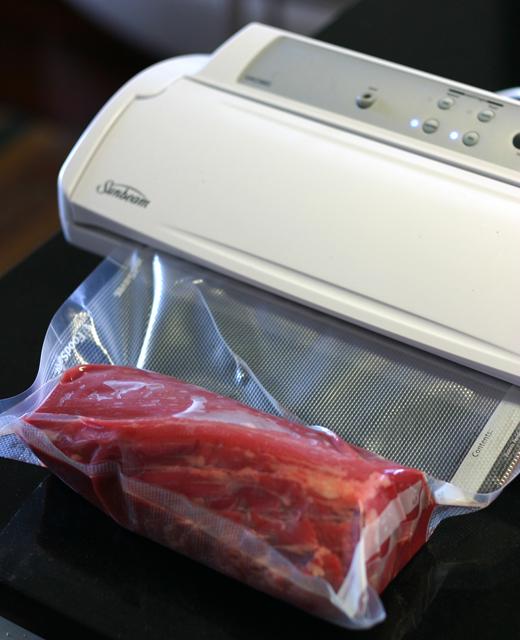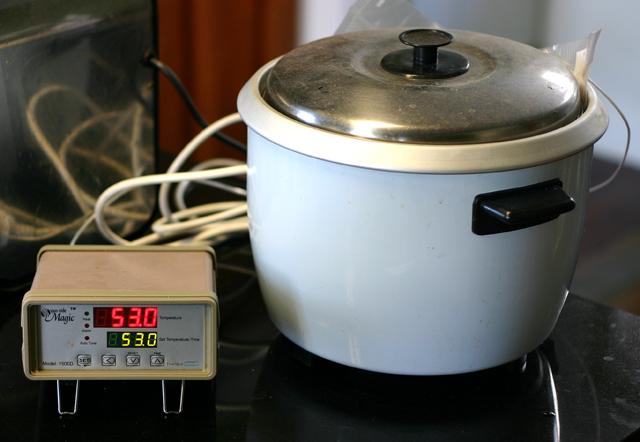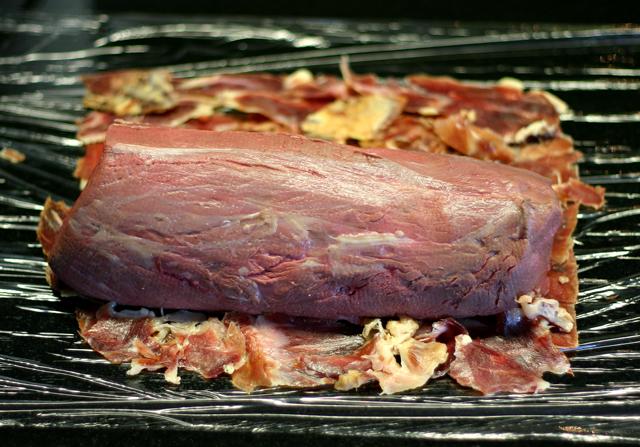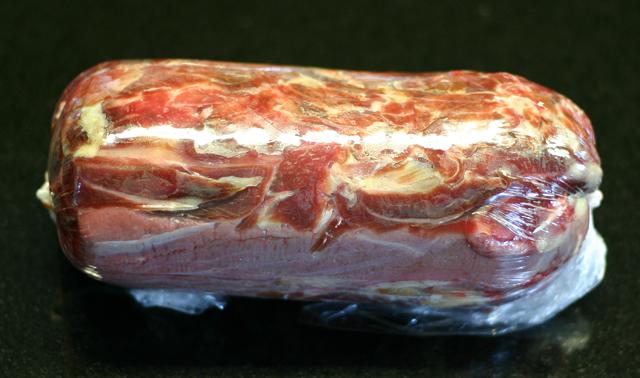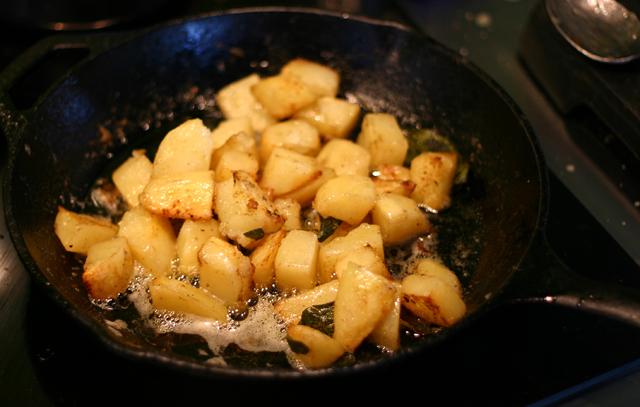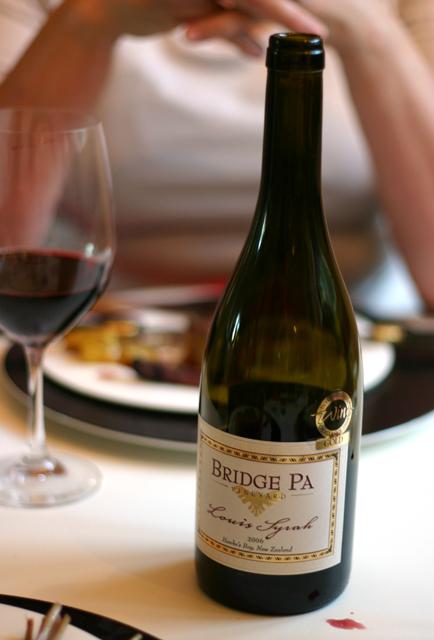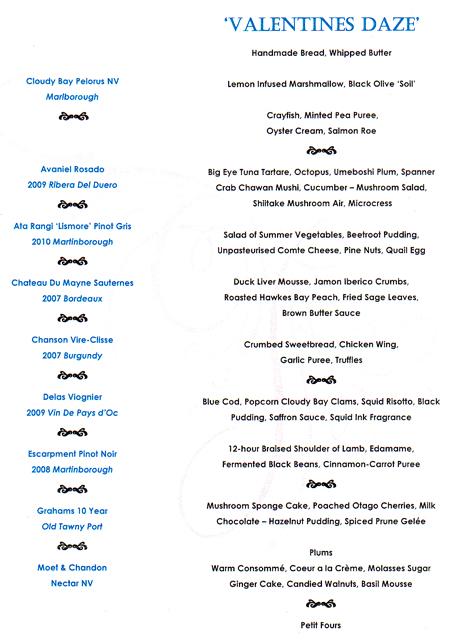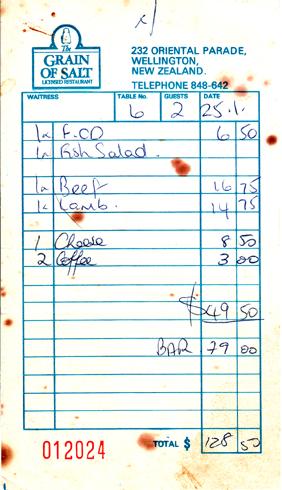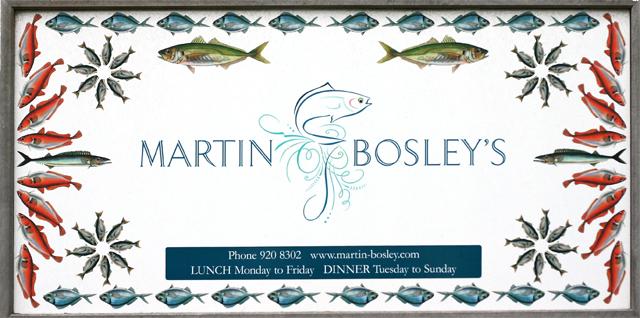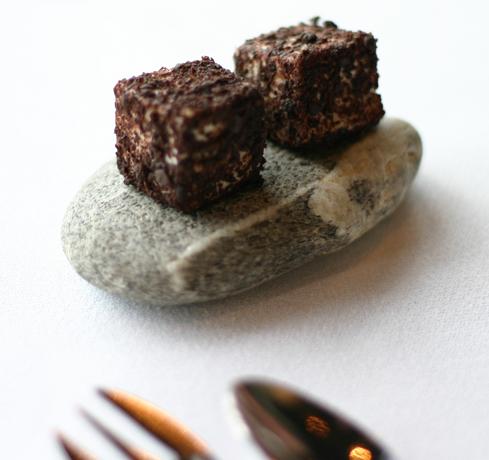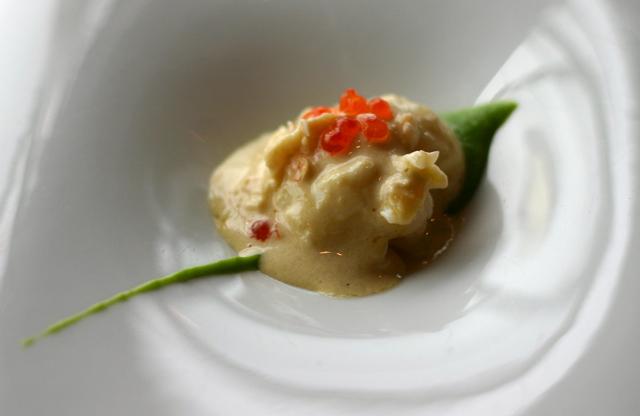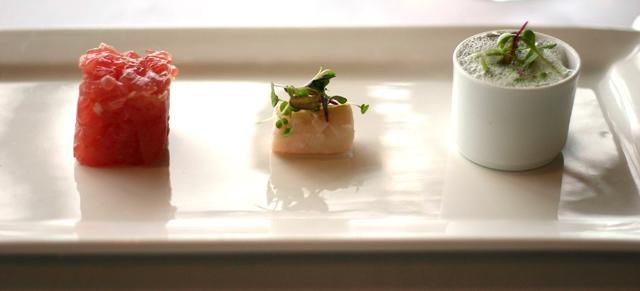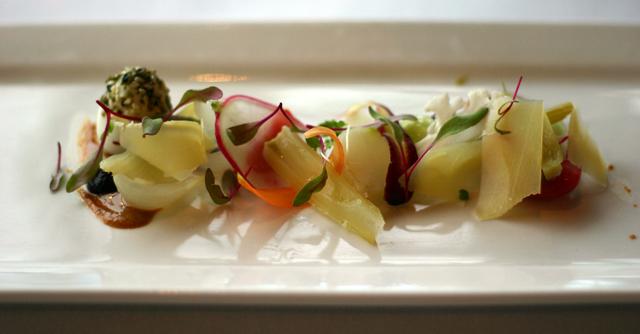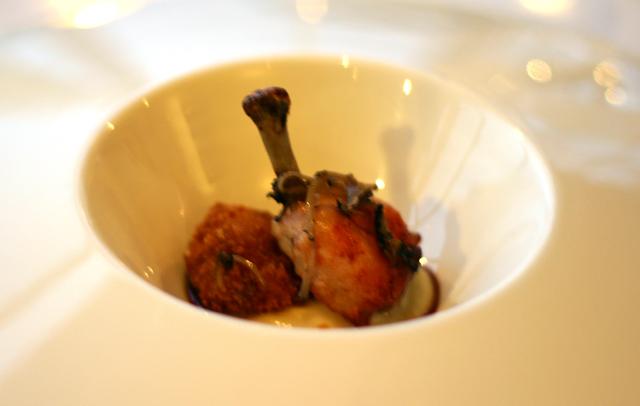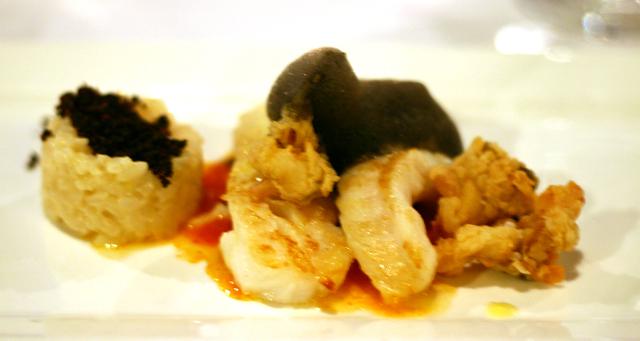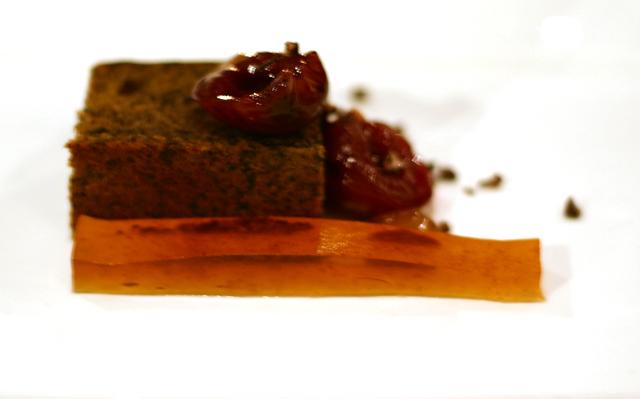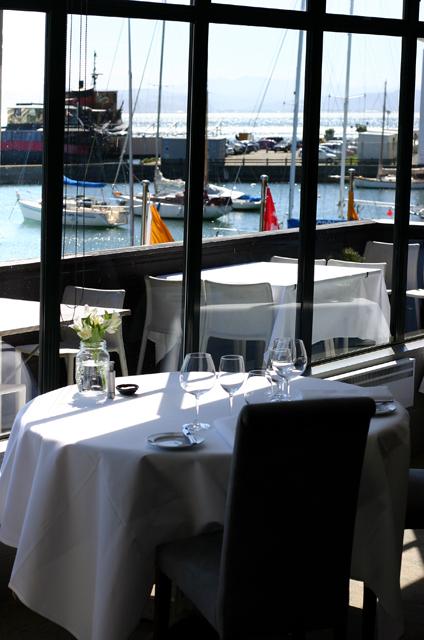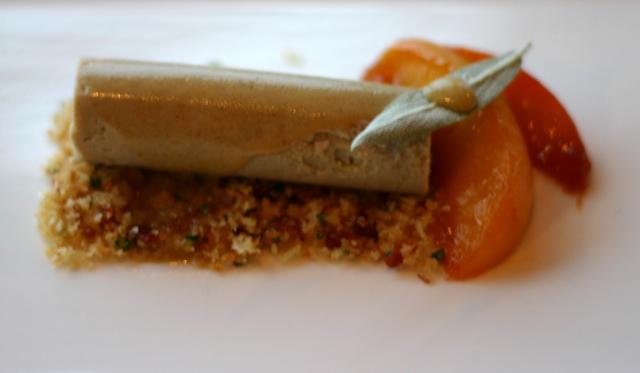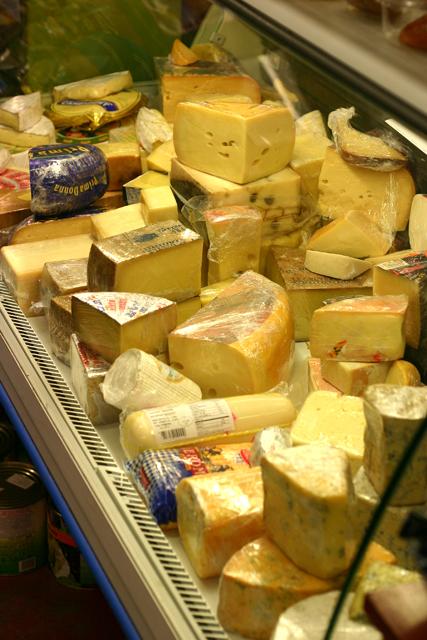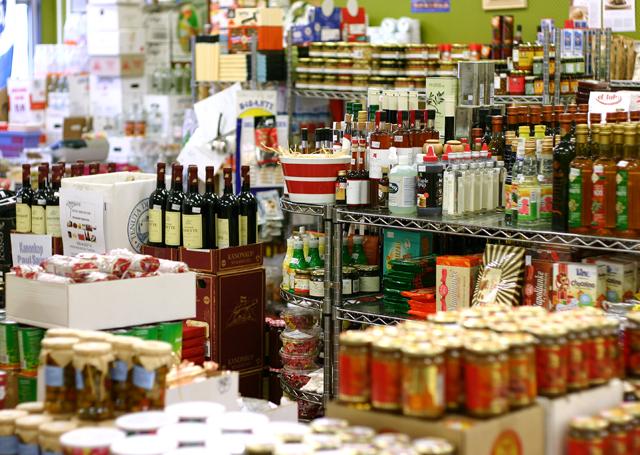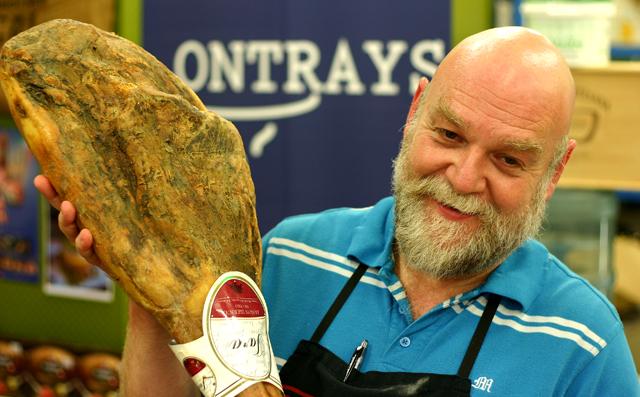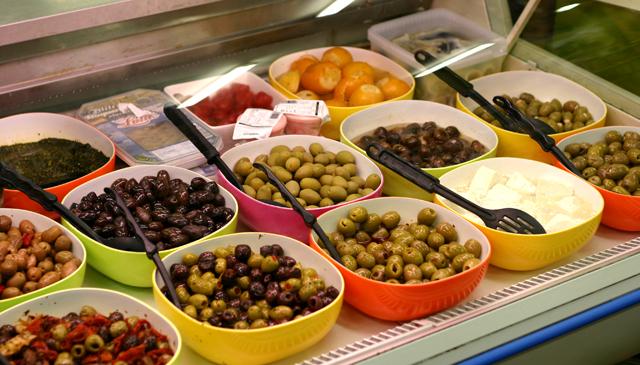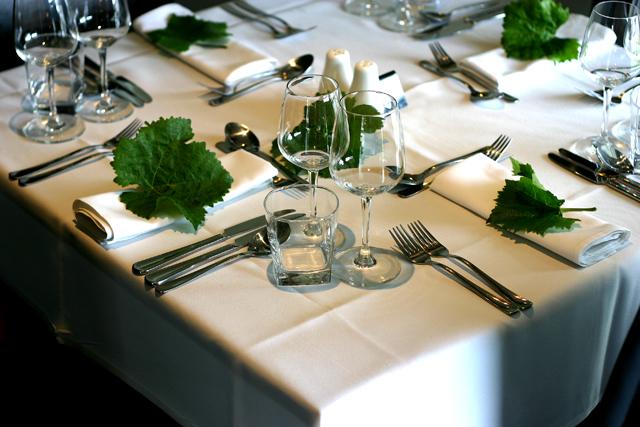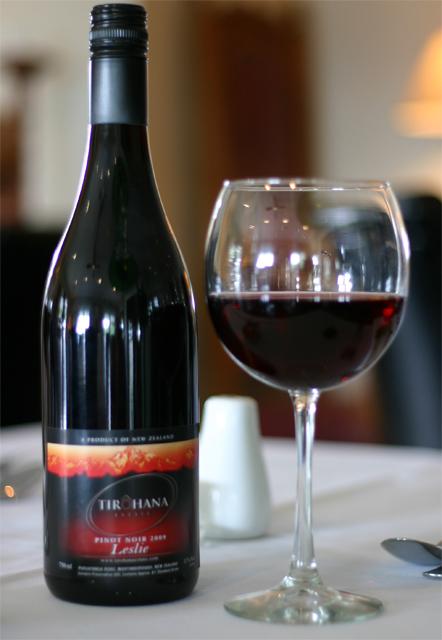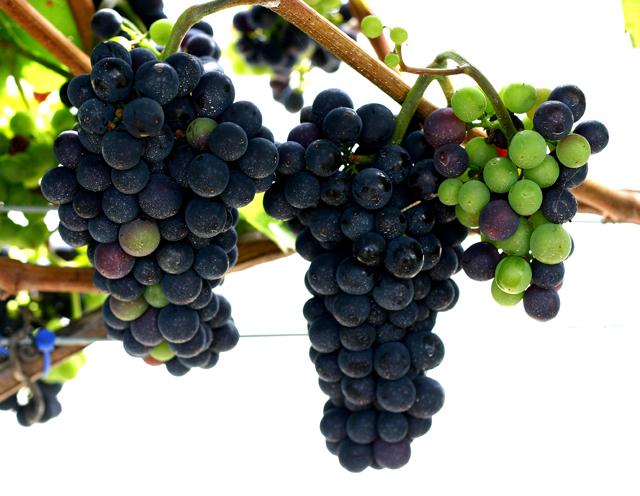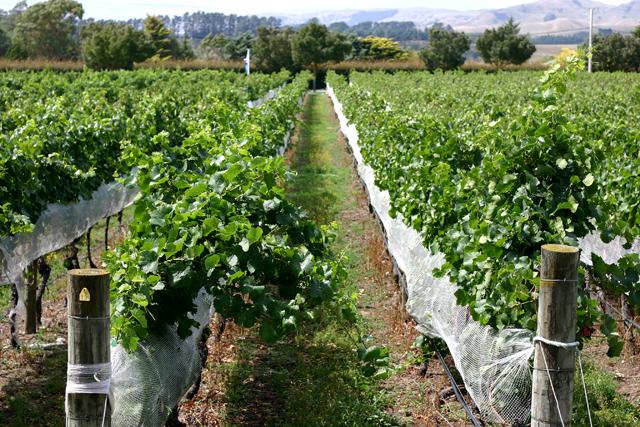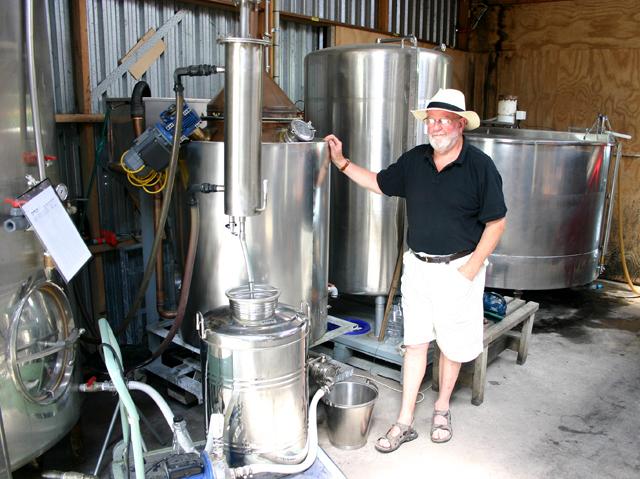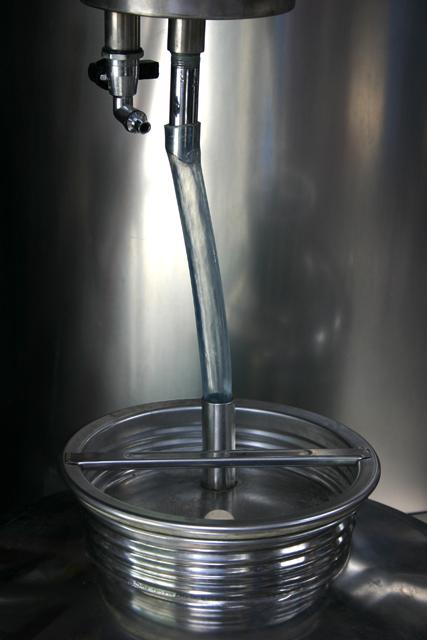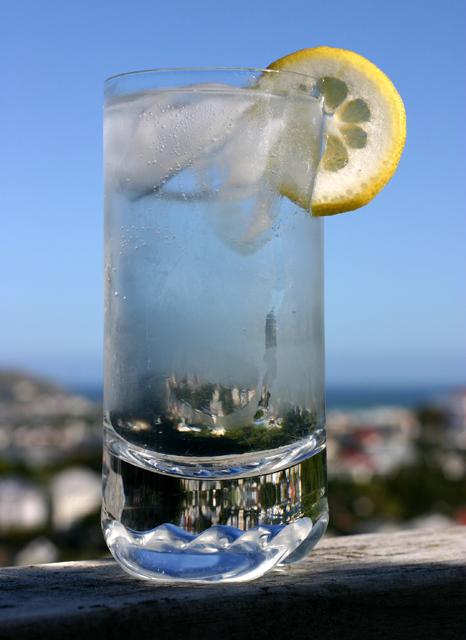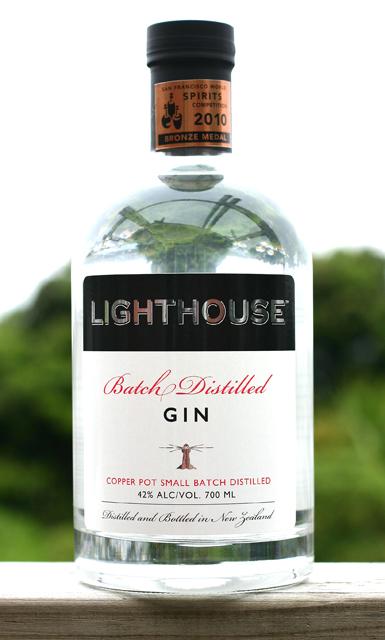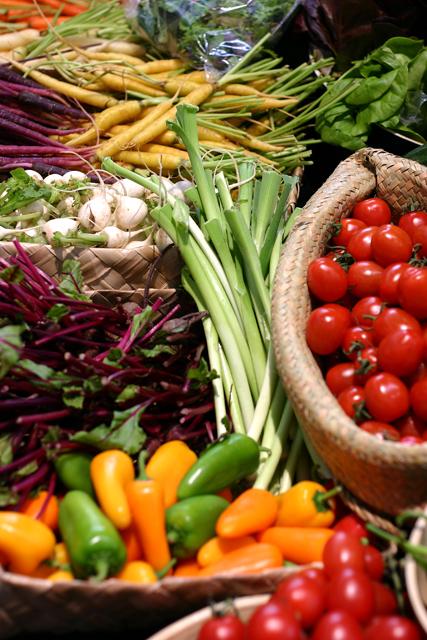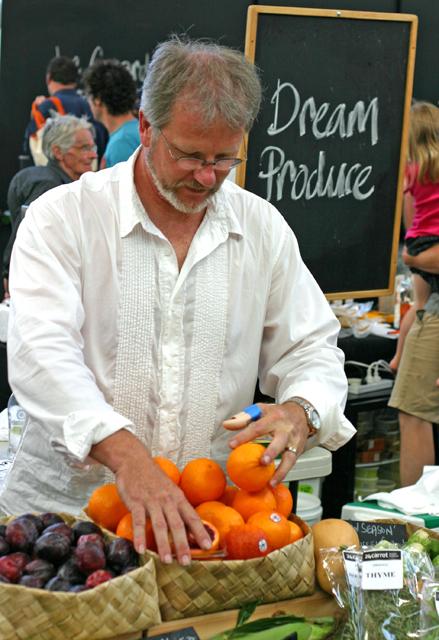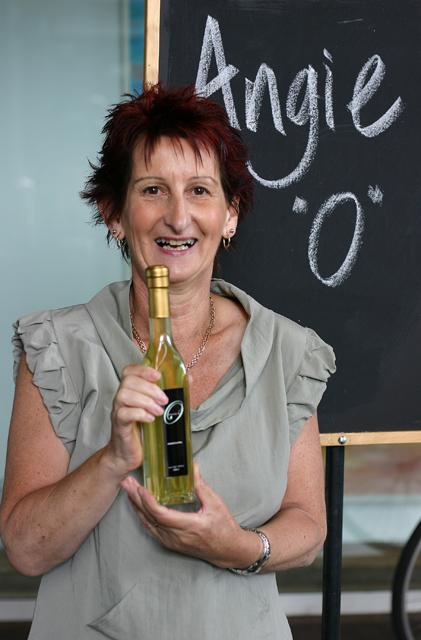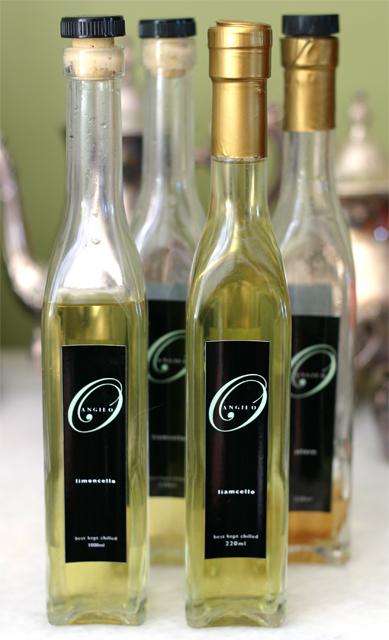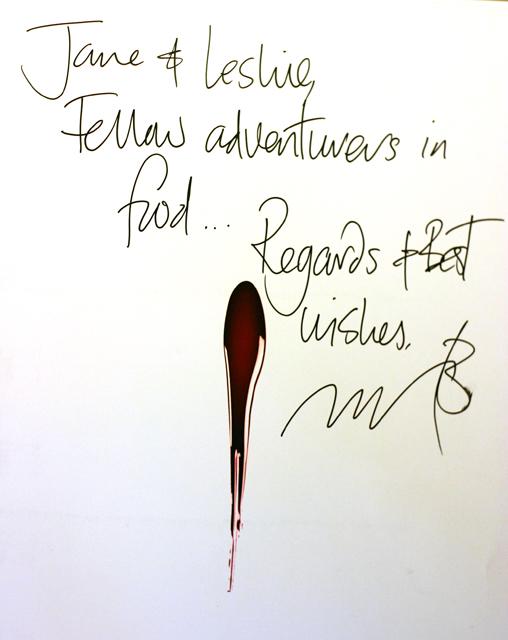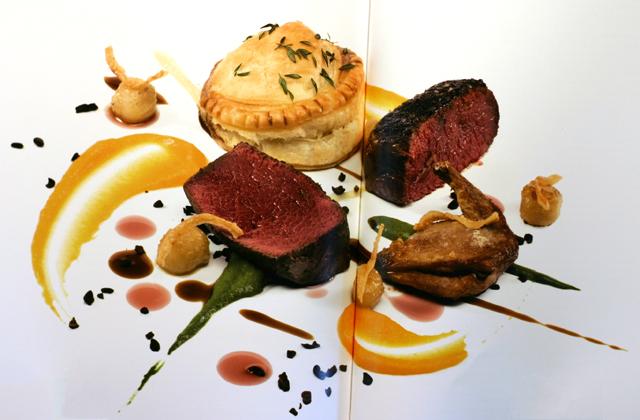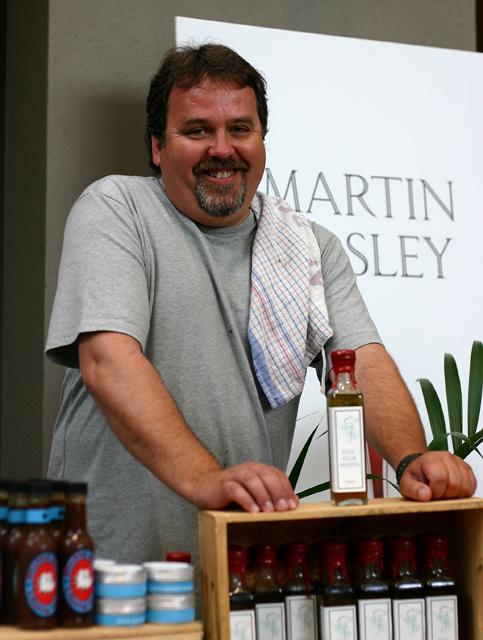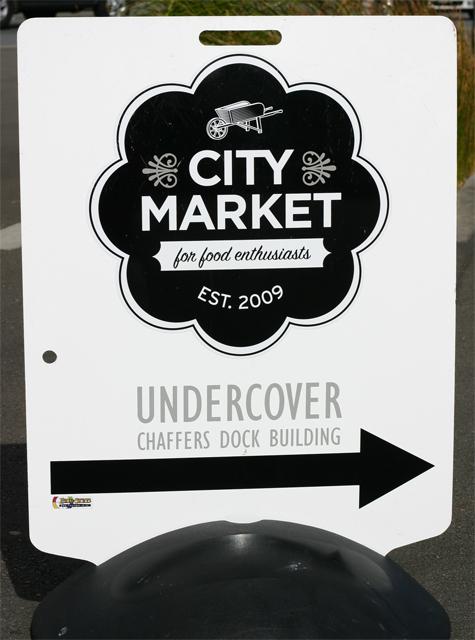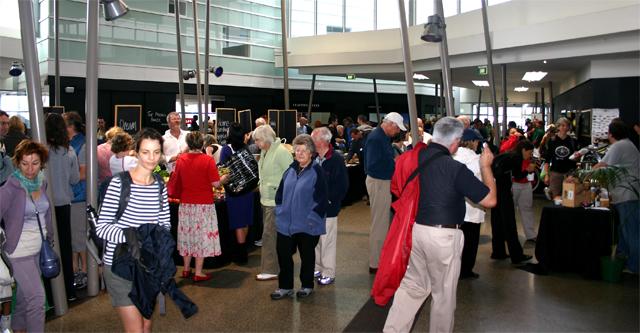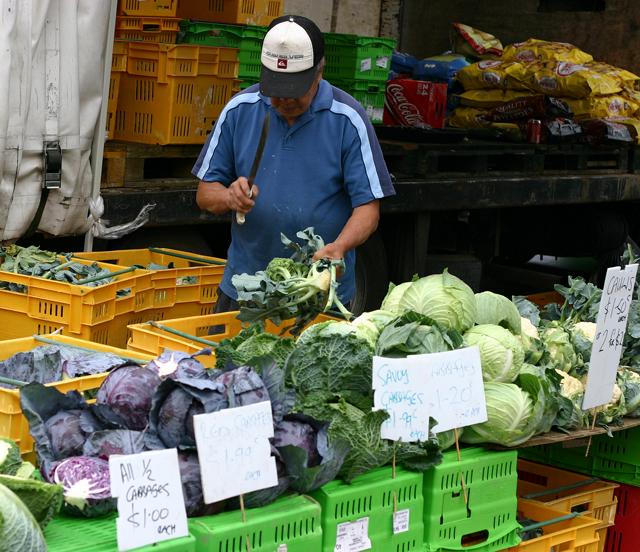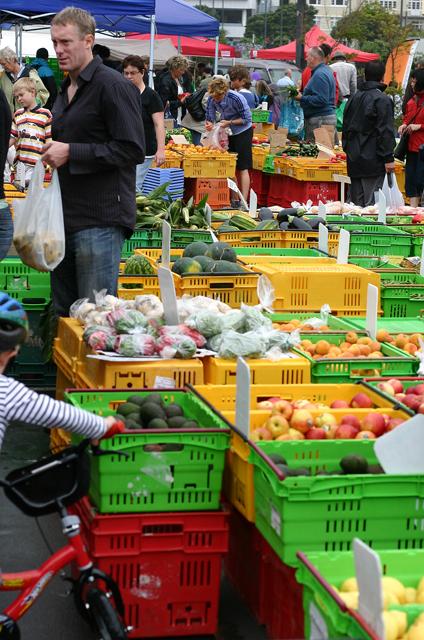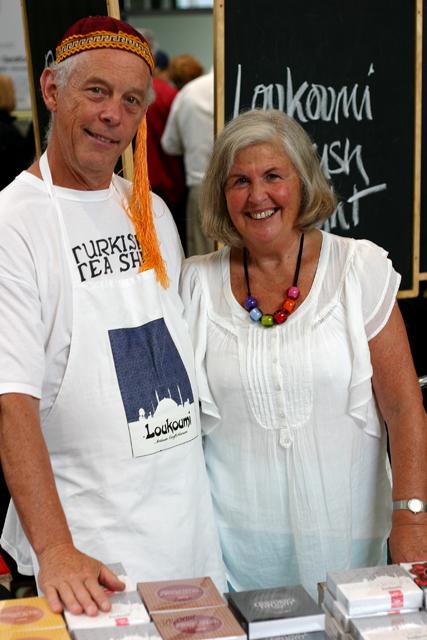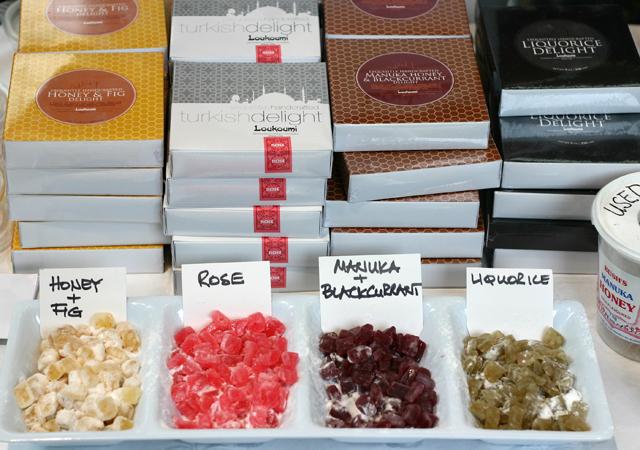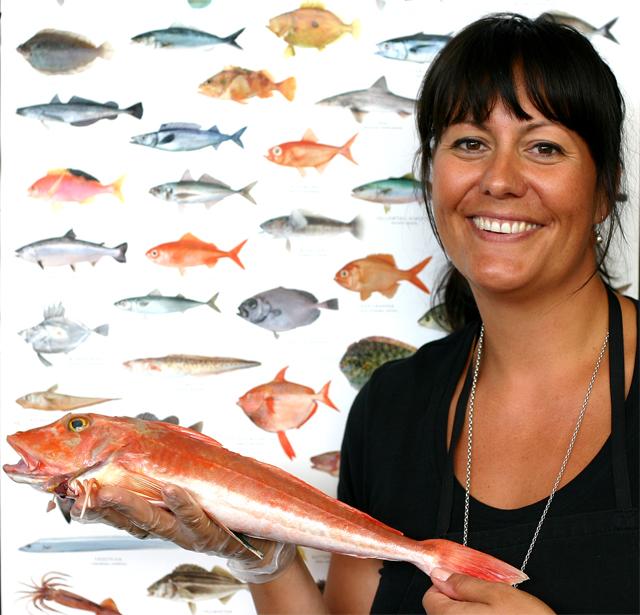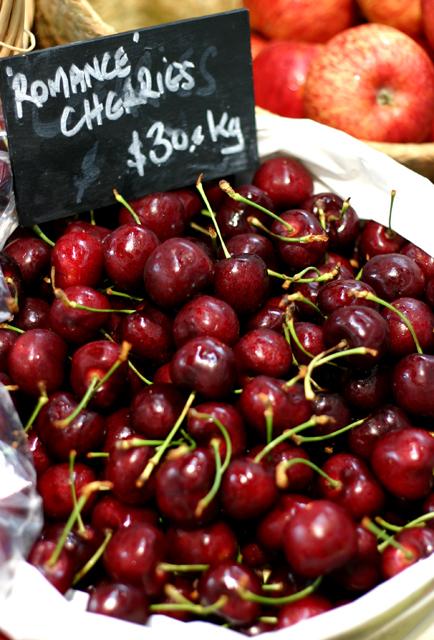-
Posts
1,664 -
Joined
-
Last visited
Content Type
Profiles
Forums
Store
Help Articles
Everything posted by lesliec
-

eG Foodblog: lesliec (2011) - Beef, boots and other stories
lesliec replied to a topic in Food Traditions & Culture
Thanks, kayb. It really was (and guess who's having the leftovers tonight?). Barolo: glad I could bring back some memories. But you really need to come back; as I hope I've shown this week, there's some good things happening here. Coming soon - within minutes, in fact, as soon as I've processed the photos: the much-anticipated Kitchen Tour. Don't go away. -
Lovely idea. And I will be in Paris later this year ... What I'd like to see is a tour - maybe including a cooking lesson - for people who already know one end of a baguette from the other. My view is jaundiced by too many tourism shows of TV; so often the people featured have (apparently) never cooked anything in their lives. I'm not talking about professional-level classes; just something for people who already know how to cook to a reasonable standard and want to get beyond the basics. Even excluding the classes idea, the sort of tour I'd most appreciate is one where we're talking to food producers on a higher level than 'gee whiz, is that what a carrot looks like?'.
-

eG Foodblog: lesliec (2011) - Beef, boots and other stories
lesliec replied to a topic in Food Traditions & Culture
Hi Helen. Clendon, huh? We used to live down the road in Manurewa. I suspect the 'no shrinkage' thing with the Beef Wellington is due to the sous vide step. Because it's such a gentle way of cooking (you could put your hand in 53° water) the meat doesn't get the same shock it does when tossed into scary hot oil. Which is not to say I don't also do scary hot at other times. Nick and I had a brief discussion a few posts upthread about what New Zealand food is. I'm not sure there's a good answer, and I'm also not sure a dedicated eGulleter necessarily represents the typical New Zealand cook, but certainly from my point of view places like Moore Wilson's support the style of cooking I'm now doing - but that might be based, depending on how I'm feeling, on Blumenthal, Adria, Keller ... or Bosley. I have invented the odd thing myself; there's a high-temp roast chicken slathered in a rustic form of pesto I've pretty well perfected. My parents would never have been exposed to the sort of ingredients I can now get. That's not to say they wouldn't have liked the results. Dad is no longer with us but Mum, although perhaps not sure why I spend so much time doing things in the kitchen, is very happy to eat what comes out. And none of that really answers your question either. Yes, when I was a kid, chicken was the treat you had for Christmas dinner and rarely otherwise. I still remember the weekend mutton roast - and the 'bone', the shank I suppose it's properly called, is still the bit I always score for myself. Mince - ground beef if you prefer - was (and is) cheap; Mum used to boil it up with carrots and onions as a sort of stew. We'd have 'proper' beef stews and casseroles quite regularly. Mutton chops - sometimes hogget, rarely if ever lamb - also frequently appeared on the table. Surely we must have had pork sometimes, but I have no memory of it. I'm not much of a fan of seafood myself - I find it's often a bit light and watery; give me something I can chew! - but then I'll have something like the blue cod at Martin Bosley's on Monday night and realise what I'm missing. It's not my impression Auckland and Wellington differ much in what's available - the 'standards' would be snapper, tarakihi, warehou (GREAT for fish and chips!), grouper, cod, moki ... probably a few others, plus shellfish, of course; lots of mussels, oysters and scallops in season. Supply isn't a problem; we have Rachel's Yellow Brick Road at the City Market to supply superb quality fish on Sundays (that's one of the very few places you can sometimes get fresh sardines); Moore Wilson's has a good fishy area and there are a few other individual retailers with good reputations. A big fish market opened in Auckland a couple of years ago but I haven't visited it. Yep, those were purple carrots. I'd like to say they were from our garden, but ours have finished - I got those ones at Moore Wilson's after I'd talked to Julie. So here we are on Friday and another clear, sunny day threatens. I'm planning a few miscellaneous topics for you today, including, if I can get my photographic act sufficiently together, the Grand Kitchen Tour. Stay tuned; I'll be back after work. -

eG Foodblog: lesliec (2011) - Beef, boots and other stories
lesliec replied to a topic in Food Traditions & Culture
[font="Trebuchet MS"]It’s every meat-eating food lover’s dream – you go into a shop, tell the man behind the counter what you’re going to cook and he comes back with a piece he’s decided is best and cuts it to exactly the size you need. Even to the extent of trimming off a few stray bits of silverskin. In Wellington, you don’t need to dream it – I did exactly that, last Saturday. You’ve seen my Beef Wellington post; this is where the meat came from. The second of the long-established family businesses I want to highlight for you is A.E. Preston Ltd, butchers since 1904. Founder Arthur Preston, it turns out, came out to New Zealand on the same boat from Liverpool as Frederick Moore of Moore Wilson’s. What are the chances – the founders of two of Wellington’s oldest family-owned food businesses, both arriving here at the same time? And let me just highlight what a young country New Zealand is; a company like Preston's has been here for a very significant percentage of our history. Like Moore Wilson’s, Preston’s is still in the family. Scot Preston, current Managing Director, is Arthur’s grandson. He was very hospitable when I visited him and branch manager Frankie, if a little puzzled when I phoned out of the blue earlier in the morning and said something like ‘I’mdoingafoodblogonegulletandcanIpleasecomeandseeyouplease?’. Such is enthusiasm. Scot, left, and Frankie contemplate another potential Beef Wellington: Incidentally, before I forget: back here Peter asked about the relative popularity of beef, lamb, pork, etc. My reply was entirely off the top of my head, where there is little hair, and I’ve now solicited an expert opinion. Frankie says the most popular meat is still beef (in all its forms); maybe 30% of sales. Next comes chicken; maybe 25%. Lamb and pork sell about the same as each other but less than the other two. It seems lamb has dropped over the past few years as prices have risen. The ranking can vary with season and export price levels, but that’s more precise than what I gave you a few days ago. Scot spoke about how the business has changed since Arthur started it. In the early years the shops would have whole hanging carcasses on display and pieces would be cut according to what the customer asked for. A fleet of horses and carts cruised the suburbs with meat for sale. Now, the picture is very much more one of pre-packaged cuts, with the emphasis on convenience for the customer (although, as I said above, they can still do it the old way if you ask them). In the 20s Preston’s had seven shops selling bacon, ham and smallgoods in addition to their fresh meats (they also had a pickle factory in Wellington and a bacon factory in Blenheim, at the top of the South Island. Where I was born, as it happens). The Depression of the 30s had a major impact, though. Now they have three retail shops in the lower North Island; the Porirua shop has an associated factory which makes their bacon and ham, and the Wellington and Palmerston North shops also handle wholesale customers. The wholesale/retail split is close to 50/50; possibly slightly more on the retail side. An separate company, Taylor Preston, is the processing/exporting arm of the business, drawing its stock from the lower North and Upper South Islands. (At last year’s Wellington on a Plate food festival, one of the themed dinners was held in their killing room. I was too slow to get tickets, unfortunately.) Prestons’ premium label is Ted’s Choice, named for Scot’s father. ‘Gate to plate’ is a horribly-abused expression, I fear, but that’s what Ted’s Choice is about – selected special cuts where Preston’s can trace the product from the farm, through processing and into their shops. Preston’s is where I go when I want some really special meat, but you don’t have to be looking for premium steak to get a great product. Their bacon has won awards, and there was an absolutely beautiful leg of ham – all from New Zealand pork, by the way – in the shop when I visited. Interesting side note about ham – Scot pointed out it’s often regarded as a ‘Christmas only’ thing, but in fact they sell it all year round and it’s one of the better-value meats you can get. My favourite part of the shop: the non-prepackaged meats. The ‘oven prepared ribs’ are superb; my choice for Blumenthal’s 24-hour steak: I think we Wellington food lovers do appreciate the history we have in Preston's and Moore Wilson's - I certainly hope so. It's up to us to make sure they're both still around in another 100 years. -

eG Foodblog: lesliec (2011) - Beef, boots and other stories
lesliec replied to a topic in Food Traditions & Culture
Something we're very fortunate to have in Wellington is some very long-established, family-owned food businesses. Here's one of them no self-respecting Wellington food lover could be without: Frederick Moore came out from Liverpool in the 1890s and in 1918 formed Moore Wilson's (there was a Wilson back then, but he was only in the business two years. But they've kept the name. Traditions can be good). In due course he was succeeded by his son Stan, then Stan's son Graeme took over and is still Managing Director. But keeping a close eye on the day-to-day running of things is Frederick's great-granddaughter Julie: (Apologies for the fuzziness - incompetent camera operator.) The company was originally based in Mount Cook - not the big snowy one; it's a suburb of Wellington - but in the mid 80s moved to their current site on Tory Street, nearer the centre of town. This was near the start of the major growth of Wellington's current food culture. The company traditionally concentrated on its wholesale clients, with a range of dry and frozen goods and variety products, but ten years ago, seeing a demand for better, fresher, more traceable food they opened Moore Wilson's Fresh. It's still referred to in the company as 'the new business' - you can do that when you've been around 90 years. The key concept with Fresh was managing the supply chain - making sure suppliers were able to get their fresh products properly chilled as soon as they came out of the ground, or the sea, or the field, and getting them into the shop as quickly as possible. Fresh has turned around the 70%/30% wholesale/retail split of the rest of Moore Wilson's business; fully 80% of sales from Fresh are to customers like you and me. We weren't living here when Fresh opened, but I'd certainly heard about it and it was one of the first places we visited when we came 'home' six or so years ago. It's now one of our regular Saturday calls. The vegetables are spectacular: In the background you can see an artwork by Hawke's Bay artist Dick Frizzell ('watercress', 'large avos', etc.). It's very reminiscent of the fruit stalls which once lined our roads. Dick paints in a variety of styles, but this particular one is one of his trademarks. We met him at Moore Wilson's last year shortly after the release of his book Dick Frizzell - The Painter; he's also released a range of rather nice wines under his own label, with boxes in this same style. As I hope you'll be able to see when I show you my kitchen, we've broken down one of the boxes (which he signed for us) and have bits of it framed on the walls. The Moore family has an interest in art and the natural spring outside, source of water for the old lemonade factory which once stood here, has been tapped for public use and surrounded by scuplture. You can always rely on Fresh to have something a little different, something you would have to search to find anywhere else. Here's an example: On Saturdays there's always in-store tastings. The man from Proper Crisps was there a few months ago, and I have to tell you - these things are as good as a potato crisp can get. The message on their packaging is straightforward: 'Ingredients: Potatoes, Sunflower Oil, Salt. That's all!'. The spuds are grown in Nelson, the salt comes from Marlborough and the packet I have in front of me says these particular crisps were made by Larry. Those in a different packet might have been made by Stuart. Very straightforward, these Proper Crisps guys, and man what a product! For something a little more exotic, how about some oils: I can't promise they all are, but a good number of the different oils on this shelf - olive, avocado - are made in New Zealand. Moore Wilson's also has imported products - we got a rather good truffle oil here a while ago, and their big cheese cooler in the middle of the shop is impressive. Along the back wall are the packaged meats - not only the standard beef or lamb; this is where you come for wild pork or hare or rabbit. In the corner, fresh fish. Along the south wall, dairy - cultured butter, buttermilk, a huge range of yoghurts, butters, milks, creams. And of course, this: Yep, that there's the Kapiti and Kohu Road ice creams we were talking about earlier in the week. And since one can't live by ice cream alone (yeah right), Fresh has a huge fresh bread counter, with products from most of Welington's artisan bakers (and we're lucky to have several - Bordeaux, Arobake, Pandoro, ...). In just a few weeks this part of the store will be filled with hot cross buns, all competing for spiciness. Heaven. And speaking of smells, that's one of the most charming things about Fresh - it has its own smell, a blend of fresh oranges and coffee. It's quite distinctive and on a good day hits you as soon as you come into the car park. Fresh isn't all there is to Moore Wilson's. Their wine and spirit department is amazing (that's where I get my exotic alcohols, like Saint Germaine and Domaine de Canton. And indeed, Lighthouse gin) as is the enthusiasm and knowledge of Courtenay, who manages that area. Next door is the bulk grocery department, also with a range of catering and chefs' supplies, while upstairs the Variety department has a big range of kitchen and other household tools, bed linen and homewares. Good pricing, too, I've found. This is somewhere you have to visit if you come to Wellington. I think Frederick would be pretty happy to see how the third and fourth generations of the Moores are looking after the place. -

eG Foodblog: lesliec (2011) - Beef, boots and other stories
lesliec replied to a topic in Food Traditions & Culture
Well, it's funny you should say that. As the week draws to a close I've been thinking about what I still had to tell you about, and a kitchen tour is pretty much at the top of the list. What's slowed me down is not that I'm ashamed of my kitchen (hell no - you'll see) but that I've found it remarkably difficult to get decent photos - lots of reflective surfaces, odd distances. But yes, you'll certainly get a look before I hang up my blogger's ... whatever it is bloggers wear. Pam, today was pretty dull - diet shakes again! And I'm still suffering from shock at how good that Beef Welly was last night. Tonight Jane's out and I have lots of leftovers. I'm thinking I'll stay simple; a cold roast lamb sandwich, probably. -
Tried the pasta myself last night, in rather a hurry and based only on the list of ingredients Chris published above. I didn't do anything special; just mixed everything, gave it a good kneading then into the fridge for half an hour or so, until I needed it. Because I was rushed I didn't even roll it out before feeding it into the pasta machine - just squashed it between my hands. By about the third thickness setting it was starting to look very nice and smooth, and reached perfection on the last two. I rolled it in three batches and was delighted to find the sheets I'd already done didn't stick to each other while I did the others. When cooked, it was delicate in the mouth but pretty robust when being manhandled out of the pot. Very good mouth feel, as others have commented. This one goes onto the 'worth doing again' list.
-

eG Foodblog: lesliec (2011) - Beef, boots and other stories
lesliec replied to a topic in Food Traditions & Culture
Catdaddy: That bit of beef was good enough to get me to forgive myself. And I haven't even done anything. Shelby: Definitely dive into sous vide (not literally, unless you have a really really big rice cooker). Above all, don't be daunted by all the scary stories about how you must be totally obsessive about time/temperature. Sure, for some things it can be critical - I have a recipe for prawns which must be in the bath for 12 minutes, no more, or they go mushy - but it's hard to go wrong with, say, a lamb rump or, at the other end of the scale, a piece of brisket which won't care if it's cooked for 34 or 36 or 38 hours. And duck confit is much easier (or at least much less messy) cooked SV than in a gallon of duck fat in the oven. The best source of tips (at least until Moderist Cuisine gets here) are the eG SV threads. And of course we expect reports on how you're doing. -

eG Foodblog: lesliec (2011) - Beef, boots and other stories
lesliec replied to a topic in Food Traditions & Culture
Hi Nick. I was going to comment that you're up late, then figured out it's me that is! I'm getting a bit blurry, but I'll try to give a coherent answer. I think the two countries are more similar than we like to admit to each other. In restaurant terms, it's probably safe to say Neil Perry there and Peter Gordon here were in right at the beginning of the fusion cookery style. Partly because of where we are, partly because of immigration, the Asian influence is quite strong in both countries. You would have seen things like edamame and umeboshi plums on Martin's menu, sitting harmoniously with 'European' ingredients, and I think that's a style we share. Even Europe is getting in on the act; there's been a distinct Asian influence in some of El Bulli's dishes for a few years now. There have been debates here, and I imagine there too, about whether we have our 'own' cuisine. I recently came across a book called Afghans, Barbecues and Chocolate Fish - an ABC of New Zealand Cooking, which contains this passage: For many years New Zealanders ... insisted that there was no real 'New Zealand cuisine', that our food simply belonged to the country or ethnic group from which it came. Our isolation helped keep this myth alive. However, international travel, immigration and greater worldwide communication has begun to convince us that our food and food customs do not exist in quite the same way anywhere else in the world. Somewhere between the passion, pride and respect for our own fresh produce and the comfort from and nostalgia for the food of our ancestors, there is a New Zealand cuisine. I haven't spent much time in Oz recently to really get a feel for what your restaurateurs/chefs are doing, but I think I'd be surprised if it was greatly different in style to what's happening here. And now I really need to go to bed. Good night. -

eG Foodblog: lesliec (2011) - Beef, boots and other stories
lesliec replied to a topic in Food Traditions & Culture
Catdaddy asked what was for dinner. This was: Well, we couldn't go through this week without a Beef Wellington, now could we? I'm going to enter the realms of controversy here. It's generally supposed the dish is named for the Duke of Wellington, who caused Bonaparte some inconvenience a while back. However, it seems the evidence for this is remarkably slim. The Duke himself wasn't greatly interested in what he was eating, and in fact the earliest reference to the dish in an English-language cookbook was in the 1960s (the French have of course been making boeuf en crôute for years, but that's their problem. Don't be picky). There is a case to be made that the dish was named following a dinner at Government House, Wellington, New Zealand. Accordingly, I hereby claim it as ours. Over in the sous vide thread we discussed recently the joys of SV-assisted Beef Wellington, so that's what this one's going to be. It's a luxury dish and rewards you finding the best bit of meat you can, cut from the middle of the fillet. Look at this stuff! If your butcher hasn't already done it, get rid of any silverskin and extraneous bits, then into the FoodSaver bag. I didn't use any seasoning at all for this one. Then into the water bath - 53°C for 1½ hours is just fine. When it comes out, dry it on paper towels and lay it on thin strips of something nice on top of a large piece of kitchen wrap. I happened to have some Jamon Iberico offcuts (thanks, Ontrays!); you could use Parma ham, even bacon if it was thin enough, I suppose. Roll the whole thing up carefully and wind the ends of the kitchen wrap so you get a tight cylinder. That's Stage 1; you can now keep it in the fridge for a couple of days if you're not ready for Stage 2. On the day you want to serve it, roll out some pastry (this is from our local supermarket's bakery department, and it's remarkably good. I'd have to work hard to match it) and spread with a layer of cooked mushroom and onion purée (mine has a bit of red wine, cream and fresh thyme in it too). Roll it all up neatly in the pasrty, sealing the joins with egg wash. Cover the lot with more egg wash and, if you have the energy, decorate it - I limited myself to knife scoring. The whole point of the sous vide cooking stage is that now you're basically dealing with cooked meat, so the only thing you have to worry about is making sure the pastry looks beautiful. I put mine into a 230° oven and 45 minutes later I had this: And inside: It may even have been less than 45 minutes. At that temperature, check regularly so the pastry doesn't get overbrowned. I served it, as you see above, with sous vide baby carrots (85° for an hour) and potatoes sautéed gently in butter and fresh sage. It's a hearty dish and needs a good wine. This is one I picked up late last year; it comes from a specialist Syrah maker in Hawke's Bay, a few hours north of here. No screwcap for this one! Dessert was a ginger crème brulée, served with a compôte of mixed berries cooked in a ginger, vanilla, lemon zest and star anise syrup. With a couple of fresh berries from the garden thrown in. I'm blowing my own trumpet here (somebody has to!), but this was up there with the best Beefs Wellington I've had - certainly the best I've made. Another slice? -

eG Foodblog: lesliec (2011) - Beef, boots and other stories
lesliec replied to a topic in Food Traditions & Culture
Thanks Erin. As you will have gathered I like Martin himself and I like his food - it's frustrating not to be able to present the images as I saw them. The $79 was a couple of glasses of Moet and a bottle of Chateau Beychevelle 1976. Things have changed, slightly! For the kid's 21st we went back to the White House, as it now was, with another bottle of '76 Beychevelle I'd found and hung onto for some years plus oner from his birth year ('85). The '76 was better - much more complete, shall we say - but didn't have the same effect as the first one. The basil mousse was a very small ball on the side of the plate and possibly got a bit lost. The highlights were the cake itself and the luscious 'Coeur a la Crème' - ice cream to us plebs. Side note: Martin's original plan was to have a 'Blood' theme for the evening, but too many people he mentioned it to said something along the lines of 'Ewww'. Silly people - I think it would have been great, so I hope he brings the idea back later in the year, maybe for the Wellington on a Plate festival. He even found some moulds used to make the models of kidneys one sees in doctors' offices, veins and all, and was planning to make jelly in them. Cool! And to answer an earlier question of yours: Lighthouse Gin should be available from La Barrique or Glengarry (three shops) in Auckland. Everybody up there will know where Glengarry is. -

eG Foodblog: lesliec (2011) - Beef, boots and other stories
lesliec replied to a topic in Food Traditions & Culture
OK, I've been promising and now here it is - your Valentine's Day surprise. Only a day or two late, but surely you can forgive that. I must start with an apology. I've proved that the human eye is still better than the camera. Even with my nice new fast lens, I couldn't get acceptable photos of the later stages of the meal as it got darker outside. This is no criticism of the restaurant; the light inside was perfectly adjusted for an intimate dinner. Even some of the later photos I've included are marginal, but you'll get the idea. Some history. Cooking's been part of what Martin does since very early in his life. His father was a commercial traveller with a subscription to Cordon Bleu magazine. Since he was away a lot during the week, Sunday was his day to get out his magazines and, as Martin puts it, 'trash the kitchen'. His parents were English and often entertained the expat community, so Martin was very familiar with cooking and hospitality well before his teens. Before leaving school he had a job as assistant porter at a motor lodge near Wellington. However, once he discovered the lodge kitchens they couldn't get rid of him and he worked his way up from washing dishes. One of the people he was working with offered him a job at a new restaurant he was leaving to open, provided Martin finished his school year with all his exams passed. That provided some focus for the rest of the year, and Martin went on to work in some of the iconic Wellington restaurants of the 70s and 80s. Talking about his new book in the City Market post above, I mentioned Brasserie Flipp, in which he had two stints as chef; since 2001 he's had his own name on the door at his restaurant in the headquarters of the Royal Port Nicholson Yacht Club, right on the Wellington waterfront. It turns out Martin's been cooking for our family longer than any of us suspected. One of his previous posts was at the Grain of Salt (now The White House), along the road from where he is now. When I learned this I checked some dates with him. It appears very likely he was in the kitchen for this meal: I'm not admitting anything, but let's just say our son was born precisely nine months later (he's 25 now). On to tonight's entertainment. I cheated by taking this one the next day in daylight, but here's our table: You'll observe out the window another horrible day in Wellington. How tedious ... Here's our menu for tonight: I think just that will give you a pretty good idea of what this place is about. I'm not going to say much more, just show you how some of the dishes came out. The only minor disappointment was the braised shoulder of lamb; it wasn't as melting as we'd expected (they substituted duck when we mentioned it). All the wine matching was brilliant. Here we go: The amuse of lemon-infused marshmallow, rolled in olive 'soil'; very light, beautiful combination: Crayfish, minted pea purée, etc.; crayfish perfectly cooked, oyster cream very subtle, purée fantastic: Tuna tartare, octopus, ... served by the man himself this time - an honour! All was good, but the highlight was the texture of the sous vide octopus: Salad of summer vegetables; I lost count, but there was at least fennel, carrot, cauliflower (summer?), radish. We were suprised the quail egg wasn't soft in the middle, but it didn't detract: Duck liver mousse; there's a reason Sauternes is traditionally served with this sort of thing: it's wonderful. The rolled mousse went beautifully with the Iberico crumbs underneath. This was the highlight so far, but read on: Crumbed sweetbread; starting to get marginal with the light, but bear with me. I haven't had a sweetbread for years and was surprised, pleasantly, at the firm texture: Blue cod; dish of the night - I wouldn't have wanted anything changed about it: And finally (because of the light) the first of the desserts. 'Mushroom sponge?', I hear you cry. Yes, and fabulous with the chocolate/hazelnut 'pudding' on top. It wasn't, as we'd anticipated, an Albert Adria microwave sponge; much firmer in texture. The strip of prune jelly along the front was deliciously intense: So there we are. I hope you've enjoyed your night out, and again I apologise for my luminary inadequacies. -

eG Foodblog: lesliec (2011) - Beef, boots and other stories
lesliec replied to a topic in Food Traditions & Culture
Hi all. Back at work today and having a crisis about having so many things still to write about and no time to do it. I'll try to get something good up tonight, promise. Kent: The supermarket is still our source of the basics - I haven't yet gone fully artisanal for stuff like plain flour and paper towels! But for the more obscure things, or where I want to be more obsessive about the quality of what I'm going to serve, I'll go specialist. Ontrays is one source; I'll post about a couple of other good ones when I get a chance to write them up. Catdaddy: Wait and see! (It should be worth it.) Helen: You'll probably know the next two businesses as well (soon ...). You really don't want to know about breakfast. I've been unable to walk to work for a while (dodgy heel), so in a vain attempt to contain my girth I generally have a diet shakey thing for brekky and lunch. Another is due as I write ... -

eG Foodblog: lesliec (2011) - Beef, boots and other stories
lesliec replied to a topic in Food Traditions & Culture
Hi, Nyonya. Thanks for that. Don't worry about your English; it looks pretty good to me (and some of the people I work with would tell you I have trouble being witty in it too). And congratulations on your engagement! Yep, Erin, you should find Lighthouse in Auckland. I'll make a couple of enquiries, if you like. When were you coming - August, did you say? -
Oooh!! I want some for my MyCook! And my juicer. And my deep fryer. And ... and ... [collapses, frothing at mouth]
-

eG Foodblog: lesliec (2011) - Beef, boots and other stories
lesliec replied to a topic in Food Traditions & Culture
OK, it's time I took you to see some of my favourite shops. I'll be highlighting three of the particularly special ones. First, we have to drive a short distance northeast to the suburb of Petone on the other side of the harbour. When the European settlers first came to Wellington, this is where they landed, and several of the streets - Tory, Cuba, Oriental - still recall the names of the first ships. Imagine this: it's Saturday morning. You've come to a tiny shop in a back street, marked with a large South African flag. Once you've squeezed in the door past the people waiting to pay for their purchases, at least one member of staff - more commonly two or three, including the owners - will ask if you'd like a coffee. You walk to the rear of the shop, past more people who, like you, have been distracted by something interesting on a shelf. Or on the floor. Once you reach the back, your coffee's waiting - no charge for that, by the way. The cup is hot, so while you sip it (carefully) you wander round a few more aisles. Maybe there's a wine tasting going on, tucked into a corner. When you've finished your coffee, somebody says 'And what can we help you with today?'. You mumble something about maybe trying some of that cheese there. They give you some. 'And if you like that style, you might like this. Try some.' Something different? 'We've just had this one in from [insert country/region here]. Try some.' Olives? Anchovies? Prosciutto? Salami? Iberico ham? 'Try some of this.' Congratulations. You've found Ontrays. Steve and Valda Scheckter started their business in 1998, pushing a sandwich cart up The Terrace (which is where I now work - quelle coincidence!). Growing tired of trying to do this in the rain, they acquired some cheese agencies and moved into a small shop in Petone - even smaller than the one they're in now, which they moved to a couple of years later. Their business now supports mostly restaurants, but you'll also see the Ontrays label in the deli section of some supermarkets. And maybe 20% of their business is from lucky retail customers like me, who know where to find them. Ontrays is the place to come for cheese. Steve and Valda sources cheeses from what seems like every country with mammals! There's Australian triple-cream Brie, there's French Mimolette, looking like a rotten orange but tasting far better. There's Spanish Manchego, there's Bulgarian feta, there's English Stilton, Lancashire and Wensleydale. Oh, and fabulous aged Gouda, made right here. And they don't just have the stuff to sell; Steve can tell you pretty much anything you might want to know about the origins and best ways to use any of his products. Valda is a very knowlegeable cook, with a huge reference library. She can even advise on kosher or halal foods and cooking methods, not something many New Zealanders would know much about. Valda wasn't in when I called, but here's Steve with one of Spain's finest: Aside from the knowledge of what they've got, what I really like about Ontrays is their willingness, even in the Saturday madness, to take time to talk to their customers; to understand what they need and, when it's not already somewhere in the shop (rare!), to find a source and order it. I asked Steve a few years ago to find a particular cheese we'd enjoyed on a visit to France. It took him a while to track it down, but he got it. Ontrays is a very valuable part of my Wellington food scene. I hope you've enjoyed this taste. -

eG Foodblog: lesliec (2011) - Beef, boots and other stories
lesliec replied to a topic in Food Traditions & Culture
Hi Helen. Good point - I didn't ask about Japan/China. Could be a good market for them, but on the other hand I'm not sure how they'd cope with the increased production it would require without fundamentally changing how they work. The same applies to any bigger market they went into, of course. -

eG Foodblog: lesliec (2011) - Beef, boots and other stories
lesliec replied to a topic in Food Traditions & Culture
After our visit to Lighthouse Gin, lunchtime called. So after a 20 minute drive we reached Martinborough, 'capital' of the Wairarapa wine region. Now, I must give you some background here. You see, when a Mummy grapevine and a Daddy grapevine love each other very much, they get married. And - um - that's where grapes come from. Martinborough led the charge in New Zealand Pinot Noir growing. Clive Paton at Ata Rangi wines was one of the pioneers of Pinot back in the 80s; now it's recognised as one of the varieties we can do extremely well. As I write the harvest is only a month or so away, so the little guys above are nearly ready to go. Note the netting to try and limit the amount the birds get: For lunch we went to Tirohana Estate, one of the oldest vineyards in Martinborough. Lovely table setting - they must have some grapes around here somewhere: The meal - sorry, no photos - was quite pleasant; tomato soup followed by chicken and mushroom risotto for me and a melon/feta/mint salad followed by Moroccan lamb shank for Jane. Toby looked after us very well. But - and I swear I didn't know about this before we arrived - look at the label on the Pinot: -

eG Foodblog: lesliec (2011) - Beef, boots and other stories
lesliec replied to a topic in Food Traditions & Culture
OK, time to put the gin enthusiasts out of their misery. Yesterday, Jane and I having both having taken a day off work for the purpose, we took ourselves an hour north of Wellington to the small Wairarapa town of Greytown. From Wellington, the Wairarapa region feels like a series of small towns (that's because it is a series of small towns). After you get over the Rimutaka hill road (horrible twisty road - sorry, no photos; I like you all but I don't want to die for you!) you come to Featherston. It gives the impression of slowly dying, but is still good for big ice creams at the dairy. Next is Greytown; much more vibrant, with lots of cafes and antique shops - this is where Wellingtonians come for a drive at weekends. Then Carterton. I hope there're no Cartertonians reading this, but really it's a bit ghastly. Very flat, one long strip of houses, shops and more houses with no redeeming features! Off to the right is Martinborough, centre of the wine region. And finally Masterton, the region's main centre, where I used to get particularly fine sausages from one of the fish and chip shops - this is going back 30-odd years, mind. But I digress ... In a shed, in a field, on the outskirts of Greytown, is the home of Lighthouse Gin. They share the facility with a juice maker; there's also a cider press in there somewhere. There we met Neil Catherall; company founder, chemical engineer and distiller. The story of Lighthouse Gin goes back at least to 2004, when a group of friends were having what Neil describes as a boozy lunch at one of the vineyards. Somebody had the thought that they should start making their own wine but somebody else must have stayed sober, so that idea was squashed. Then they decided maybe brandy, because of the number of idiots people who were making wine. However, they then worked out that, even ignoring the time it would take to get the recipe right, the product would need maturation and blending and so wouldn't really be viable until after they were all dead. So ... gin. After a few years to get the recipe where they wanted it, Lighthouse came onto the market in June 2009. And I think I may claim to have been drinking it pretty much from the beginning! As you see from the photo, this is not a large operation. The still holds 200 litres (a batch was going through while were were there). However, that's not necessarily a bad thing. Neil and his partners wanted an ultra-premium product. Unlike many - dare I say most? - high-end gins, Lighthouse is distilled twice. The first distillation takes neutral spirit (made from cane - they tested other sources and decided they liked this one best) and water, adds the botanical flavourings in bags (they allow these to steep 12 hours at room temperature before turning on the still) and ends up as overproof gin (around 71% alcohol, I think Neil said). This then goes back into the still with more water and is distilled again, then finally it's cut with rainwater - not just any rainwater, mind; they distill that as well - to bring it to 'drinking' stength of 42%. The result, they believe (and as a drinker of the product I must agree) is ultimate clarity, purity and the best taste. This is what hot gin looks like, straight from the still: Lighthouse is classed as a London Dry style. This means no additional flavouring is added after distillation. The botanicals they use are locally-sourced where possible. They use fresh, not dried, lemon and orange zest (I got the impression of Neil sitting with a bag of lemons and a zester over the long winter evenings). 'Standard' gin flavour comes of course from juniper; they also add sweet almond, cassia bark, coriander, cinnamon, liquorice root, orris root and probably several other things. Neil has no problem with us all knowing what's in there; it's the exact recipe he's keeping to himself. A New Zealand element comes from kawakawa leaves, which add a very slight peppery note (by coincidence when we went to dinner later that day we were offered kawakawa tea at the end and can confirm it's rather nice). The still itself was made just down the road and the bottles are made in France; there's a factory outside Paris which many of the high-end spirit makers go to because of the quality of its glass. So ... what's it like? I lack the vocabulary to adequately describe tastes. The best I can do is to say if you like Bombay Sapphire, you'll love Lighthouse. One revelation for us in the last little while is how much difference good ingredients make to a cocktail (yeah, I know, it's obvious). I guess it's fair to say a Martini is a good test for any gin - there's not much else in there! Where previously we might have used an 'ordinary' gin and commonly- available vermouth, moving to Lighthouse and a good vermouth (we're on Donin at present) results in an entirely different, much richer drink. That said, it's hard to beat a G&T, and our secret there is a small quantity of St Germain elderflower liqueur in the mix. Salut! As to where you can get it ... well, that might be tricky. In New Zealand, fine (good retailers, anyway). Aussie: yes, they have a distributor in Melbourne. UK/Europe: not sure; email Lighthouse. US: problem. Your regulations mean the bottle itself is illegal - it's 700ml; 750 or a litre would be OK, and they're thinking about that. The label would need a lot of work to make it compliant with US requirements. The message from Neil is: please don't just order it from the website without emailing first. It might save you money and irritation. It's OK if somebody sends it to you as a gift, however, so if you know somebody in New Zealand there might be a way. Oh no, what did I just do??? -

eG Foodblog: lesliec (2011) - Beef, boots and other stories
lesliec replied to a topic in Food Traditions & Culture
Hi Mitch. I'm confident in saying the cherries are local. Yes, they are a lot more than your average cherry, but they're not your average cherry (and remember the exchange rate/metric thing - $10 a pound in your part of the world, maybe?). Will said he'd had some of the same breed that were the size of a Brussels sprout. He had ordered another 20kg from his grower but nothing arrived, so he concludes that's that until next year. -

eG Foodblog: lesliec (2011) - Beef, boots and other stories
lesliec replied to a topic in Food Traditions & Culture
More gin, Vicar? I'm just about to go out to talk to some more food people around Wellington on your behalf, but I know some of you have been dying for a drink. So I'll leave you this to be going on with. I'll tell you more in a couple of hours - make sure you save some for me. -

eG Foodblog: lesliec (2011) - Beef, boots and other stories
lesliec replied to a topic in Food Traditions & Culture
Erin: I like you! We're going to get along just fine (but don't get me started in a punfight about trees or fish. You can't possibly win). Codheadred: Thanks for that - the first response from Liverpool, I think. Shelby: You shouldn't have much trouble finding Turkish Delight; finding a really good one might be harder. As Erin says, it's a soft jelly, rolled in either icing (confectioners') sugar or cornflour (cornstarch). The traditional flavour is rose. Last time I saw Ross and Trish at the market they had new treats (whose name escapes me) consisting of rose Turkish Delight rolled in filo pastry. Horribly addictive, I suspect. Incidentally, I must apologise for omitting a Web address for Loukoumi. Here it is. Pam: Yes, we are subject to seasonality; I was just trying to continue my deception about Wellington's perfect weather (very nice again today, thank you). The cherries are now all but finished, and we'll have to wait until October for the next lot of asparagus. Of course, as with most places we import stuff that's in season elsewhere - Californian oranges spring to mind. -

eG Foodblog: lesliec (2011) - Beef, boots and other stories
lesliec replied to a topic in Food Traditions & Culture
Erin: Patience! Oil things come to she who waits (maybe I should have warned everybody I've never met a pun I didn't like). Haresfur: Thanks for the kind words. Call me a traditionalist, but I'm happy to choose between real corks and screwcaps. Synthetic corks scream 'cheap'. Pierogi: 27°C sounds like a pretty good winter! One of the nice things about Wellington is we don't really get extremes of temperature. Some parts of the country have hit close to 40°C in the past few weeks (over 100°F), and in a few months some parts will have some snow (actually, some of the same parts!), but Welly plugs solidly on; a particularly cold winter's day might hit 5° and the hottest summer one might manage 28°, but those are pretty unusual. Between 10 and 20 is probably our norm. Hang in there; the salads are coming. Beat Bombay? Yep, easy. Check back tomorrow. Harry: I'm visiting MW tomorrow, so that should be reported here in the next day or two. My sympathies on your Sunday constraints. Have you had a look at the Hill St farmer's market on Saturdays? I'm just back from a lovely dinner, people. Feeling quite happy with life in general, but I really need to get some sleep now (it's about 11.20pm here). See you tomorrow. -

eG Foodblog: lesliec (2011) - Beef, boots and other stories
lesliec replied to a topic in Food Traditions & Culture
Chris, Nick, Erin: thanks for your additions. I hadn't heard about the 'controlled air' screwcaps, but it sounds sensible. Nick's right about us being early adopters in this part of the world. Indeed, I understand we've sometimes been used for test-marketing new technologies because of this. Boxed wines: yes, they're still around, but don't expect anything good out of them (I'm speaking only of New Zealand ones; I think Australia has persisted with them, with better wine, more than we have). Honestly, I don't think I'd even try mixing any of ours with tonic to make it drinkable. In fact, now I think about it, any I've looked at recently have all been mixes of local and imported grapes - possibly even concentrates. Ugh! -

eG Foodblog: lesliec (2011) - Beef, boots and other stories
lesliec replied to a topic in Food Traditions & Culture
Wellington’s had outdoor weekend fruit and vegetable markets for years, but in the middle of 2009 we got something different: an indoor, undercover market featuring local suppliers. The City Market was brought to life by chef Martin Bosley, and Rachel Tauleilei of fabulous fish suppliers Yellow Brick Road. They both knew some amazing Wellington food people, and their vision for the Market was to create a space to allow Wellingtonians and visitors to connect with these people and their products. The rules are similar to those for farmers’ markets – in general the products are locally-produced and represented by the people who make them - but slightly broadened to recognise that we’re in the middle of a city; one of the stallholders sells French raw-milk cheeses, for example. Even the kids get looked after; local company Craft House provides activities for them, while most weeks a winemaker is along with tastings for Mum and Dad. There's Emporio coffee, there's amzing bratwursts, there's crepes, there's two - yes, two - artisan bakeries. And each week a different café or restaurant takes over the market kitchen. And an important point, which I suspect most of us who show up on a Sunday morning either don’t know or have forgotten: the Market is non-profit. Martin and Rachel have put it together, not for themselves but for the industry and the city they live and work in. Thanks, guys! The Market’s held in the ground floor of an apartment building right on the waterfront – imagine living here on a Sunday! As one of the stallholders said to us last week, there’s always a happy feeling here. It’s a great opportunity to talk to the producers themselves and discuss ways of using their products. Let’s talk to some of the stallholders. First, superchef, market founder and genuinely nice man Martin Bosley himself. When he’s not in his restaurant just down the road from here, or cooking for the guests of luxury lodges or passengers on exclusive cruise ships, or helping promote New Zealand food and wine in other countries round the world, he has a stall here in ‘his’ market, where he sells his range of cordials, dips and prepared meals. I heartily recommend his oxtail. It comes in vacuum-sealed bags which, for a sous vide user like myself, makes life very easy – an hour or two in the water bath at 65°C or so and they’re ready to go (non-sous vide fans probably do it faster in the oven!). He has lamb shanks and duck confit as well, the latter flavoured with vanilla. Last year he published a stunning new book, which he’ll happily sign for you. Here’s the inscription in mine, and a sample page: The book covers Martin’s career at one of Wellington’s ‘must see’ restaurants of the 80’s, Brasserie Flipp, and later at his own place in Oriental Bay. The recipes are well explained and beautifully photographed. The ‘Flavours of Pinot Noir’ above is probably the most complex thing I’ve attempted, but the book breaks it down well into individual components, none of which is terribly difficult. (Things do get slightly exciting at the assembly stage, I admit, if one has only two hands!) ISBN 9781869621797 if you want a treat, but it doesn’t seem to have hit Amazon yet. Apart from being a fabulous chef himself, Martin is very tolerant of cooking amateurs who bring their efforts in for him to try (not thinking of anyone here …) He particularly endeared himself to me by pronouncing a bottle of my bay-infused olive oil ‘outstanding’. (More about my oils as the week goes on.) This is Angie, who makes wonderful Italian liqueurs, pickled garlic and garlic sauce under her Angie O label, all while holding down a ‘normal’ job during the day. We may have been responsible for a major breach in Italy/New Zealand relations by treatment of Angie’s Alloro bay liqueur. The Italians apparently like it as a digestif, served at room temperature and tossed back after a meal. We like to serve it with ice, to be sipped before a meal. Angie’s Italian friends are appalled, but she’s got some of her local customers enjoying it our way too. She also makes a lovely limoncello, which finds its way into several of our cocktails at home – if a recipe calls for citrus vodka we substitute half ‘normal’ vodka and half limoncello. Marvellous stuff, as is her new liamcello made from limes. Dream Produce is the retail label of top-quality fruit and vegetable supplier 24 Carrot. Will has been selling premium, often organic, produce to Wellington restaurants since 2002 and now appears at the City Market with an astonishing range – I bought my first fresh white asparagus from him last year. He sources some 80% of his products from the usual daily fruit/veg market; the rest comes directly from growers. This give him the ability to find some of the less mainstream items chefs might ask him for. Look at those cherries – yes, they tasted as good as they look. Will also hosts a motorcycle club for food-industry people, to give them a chance to get out of the kitchen and blow off a different sort of steam. And before you ask: that dressing on his thumb is proof that even cauliflowers can bite! Here’s Rachel of Yellow Brick Road, co-founder (with Martin) of the City Market. Rachel’s the one on the right. Rachel’s had a fascinating career. She trained as a lawyer, for which we must forgive her, and started Yellow Brick Road five years ago after eight years in the US as trade commissioner. Her idea with Yellow Brick Road was to shorten the time it took to get fresh New Zealand seafood to US chefs, using the contacts she’d built up with both consumers in the States and producers here, and she did that very successfully. But local chefs who had tried her ultra-fresh fish kept pestering her to supply them as well. A change to the business model was called for, and now all her product is sold within New Zealand. Rachel has the distinction of being the person who got Jane and I liking oysters after many years of perceived aversion. Her Makutu Bay ones, from Waiheke Island near Auckland, are tasty, meaty treats, rather than something best left in a handkerchief. Ross and Trish bought Loukoumi, an artisanal Turkish Delight manufacturing business, in 2003. The original recipe (no gelatine!) was brought to New Zealand by a Romanian family escaping from Communist persecution. Ross and Trish have expanded the range and, as well as the more traditional flavours like rose, orange and berry, now offer such exotica as liquorice, pomegranate and feijoa (that’s a fruit native to South America we seem to have adopted as our own). At the appropriate time of the year they even make a Christmas Pudding flavour – highly recommended! And remember the White Witch’s Turkish Delight in The Lion, the Witch and the Wardrobe? It came from Loukoumi (they made 120kg of it for maybe 15 seconds file time, but that’s another story). That’s only a taste, but this is getting kinda long! Outside, the separate Harbourside fruit and vegetable market on Sundays takes over most of the carpark beside our national museum, Te Papa, while down on the wharf you can buy fish straight from the boat (with free advice on cooking it). Perhaps some photos will suffice: We're now very well served for high-quality, fresh produce. But that's not the half of what's available here, as you'll see when I take you to a couple of my other regular haunts. Enjoy these for now - it's time I started getting ready to go out to dinner. A report will follow in due course.


